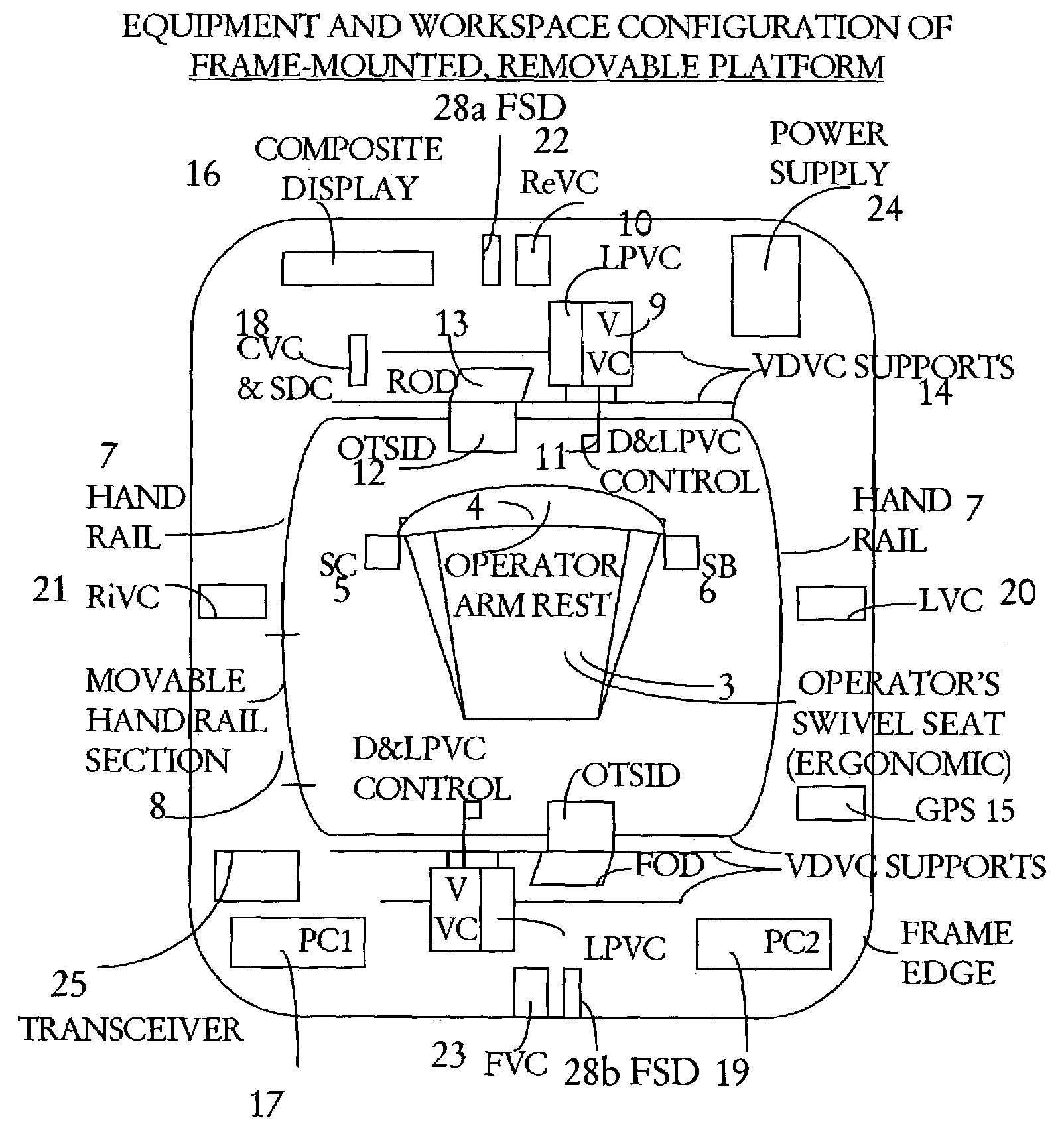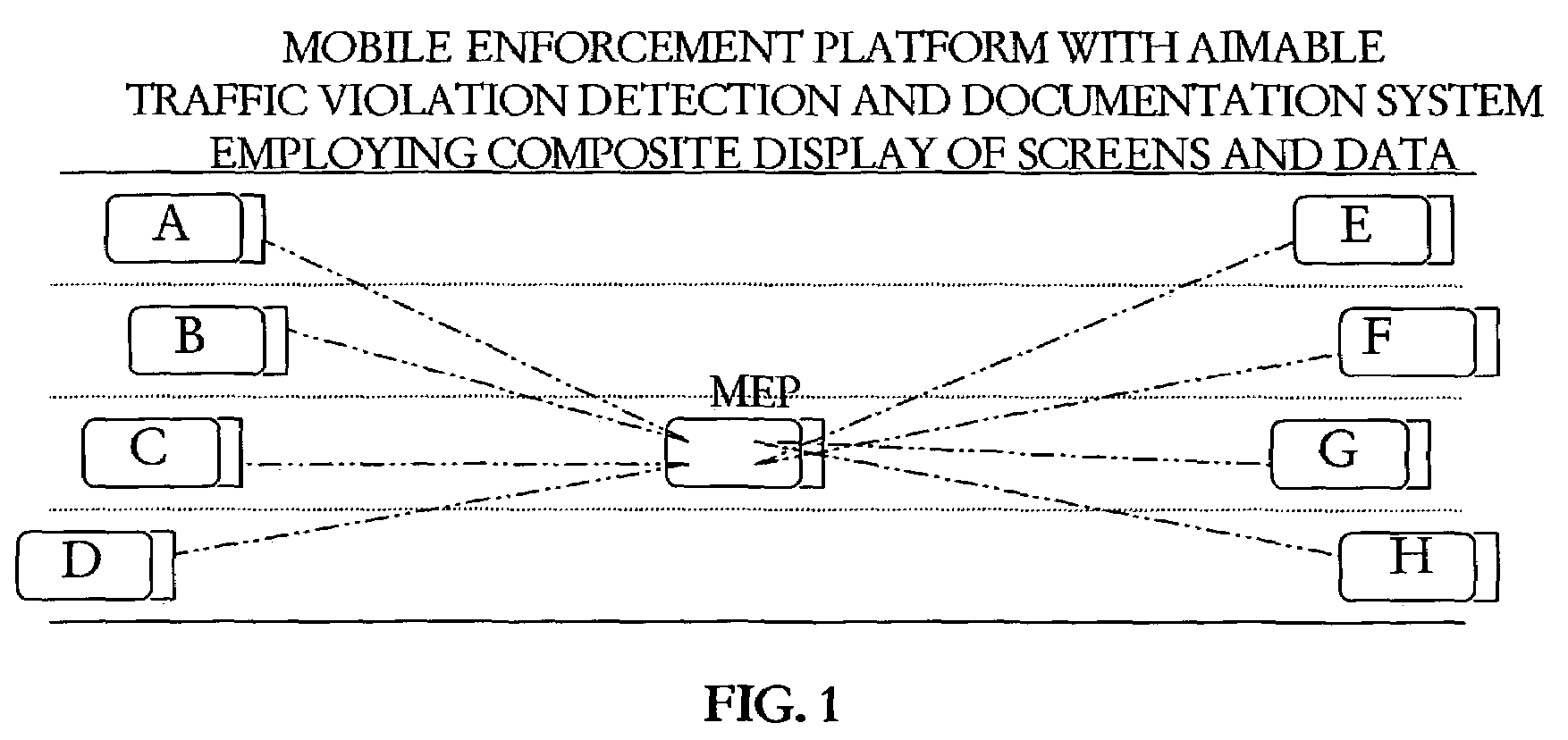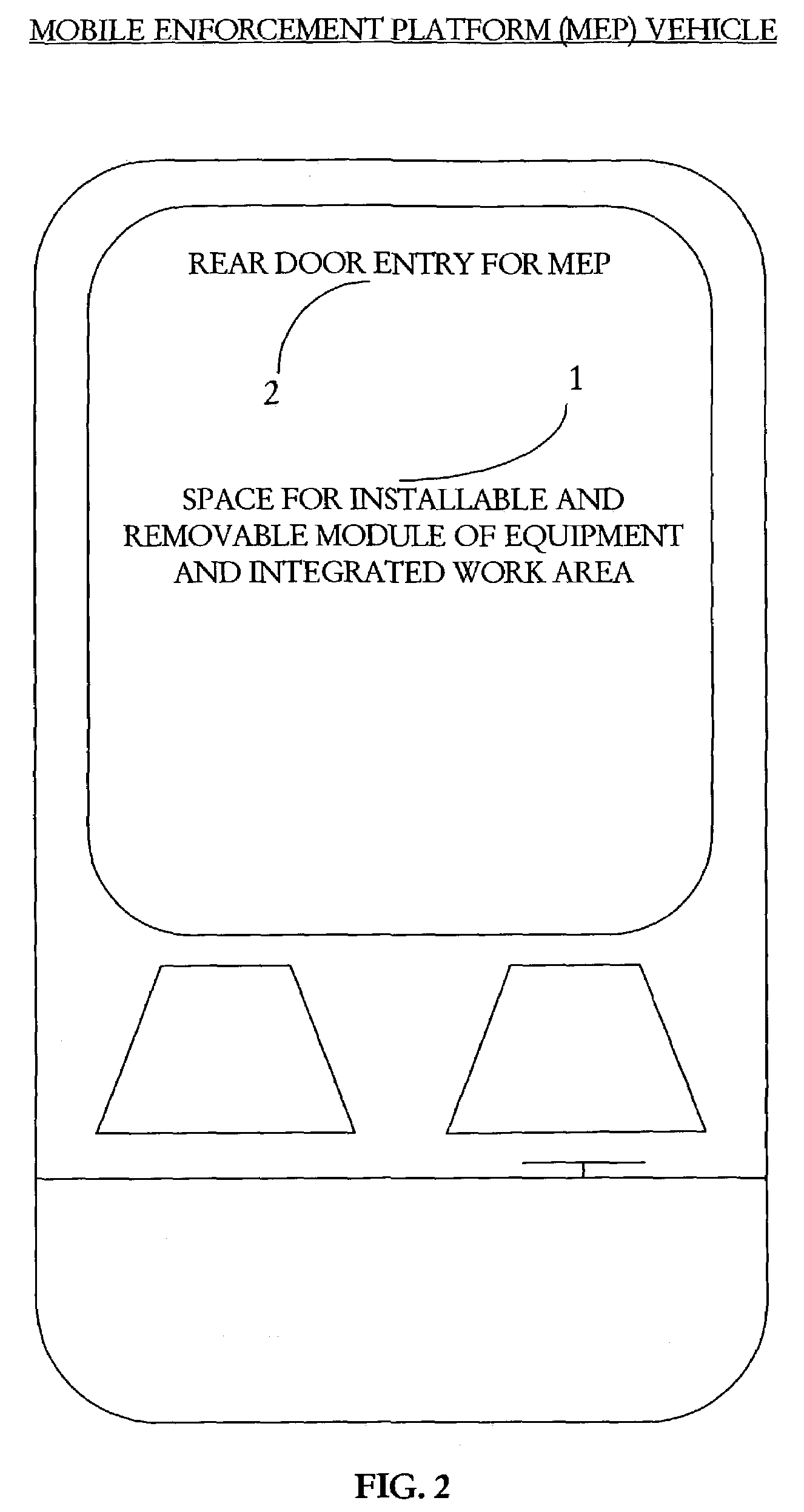Mobile enforcement platform with aimable violation identification and documentation system for multiple traffic violation types across all lanes in moving traffic, generating composite display images and data to support citation generation, homeland security, and monitoring
- Summary
- Abstract
- Description
- Claims
- Application Information
AI Technical Summary
Benefits of technology
Problems solved by technology
Method used
Image
Examples
Embodiment Construction
[0037]FIG. 1 is an overview showing the Mobile Enforcement Platform (MEP) in a multi-lane highway setting in the midst of traffic flowing from left to right. Although the invention is intended to support identification and documentation of traffic violations by vehicles driving in the same direction as the MEP vehicle, MEP can be used in a stationary mode detecting and documenting violations by either oncoming or overtaking vehicles. MEP's violation identification and documentation system is aimable so that the onboard operator can point it at a vehicle in any parallel lane as well as MEP's own lane. This flexibility overcomes the limitations of previous onboard systems which are fixed-aim, driver-operated (no second officer present to focus entirely on violation identification and documentation), and generally support the one-to-one police enforcement approach that greatly limits the effectiveness of current traffic enforcement.
[0038]As illustrated, the aimable equipment, which is ...
PUM
 Login to View More
Login to View More Abstract
Description
Claims
Application Information
 Login to View More
Login to View More - R&D
- Intellectual Property
- Life Sciences
- Materials
- Tech Scout
- Unparalleled Data Quality
- Higher Quality Content
- 60% Fewer Hallucinations
Browse by: Latest US Patents, China's latest patents, Technical Efficacy Thesaurus, Application Domain, Technology Topic, Popular Technical Reports.
© 2025 PatSnap. All rights reserved.Legal|Privacy policy|Modern Slavery Act Transparency Statement|Sitemap|About US| Contact US: help@patsnap.com



